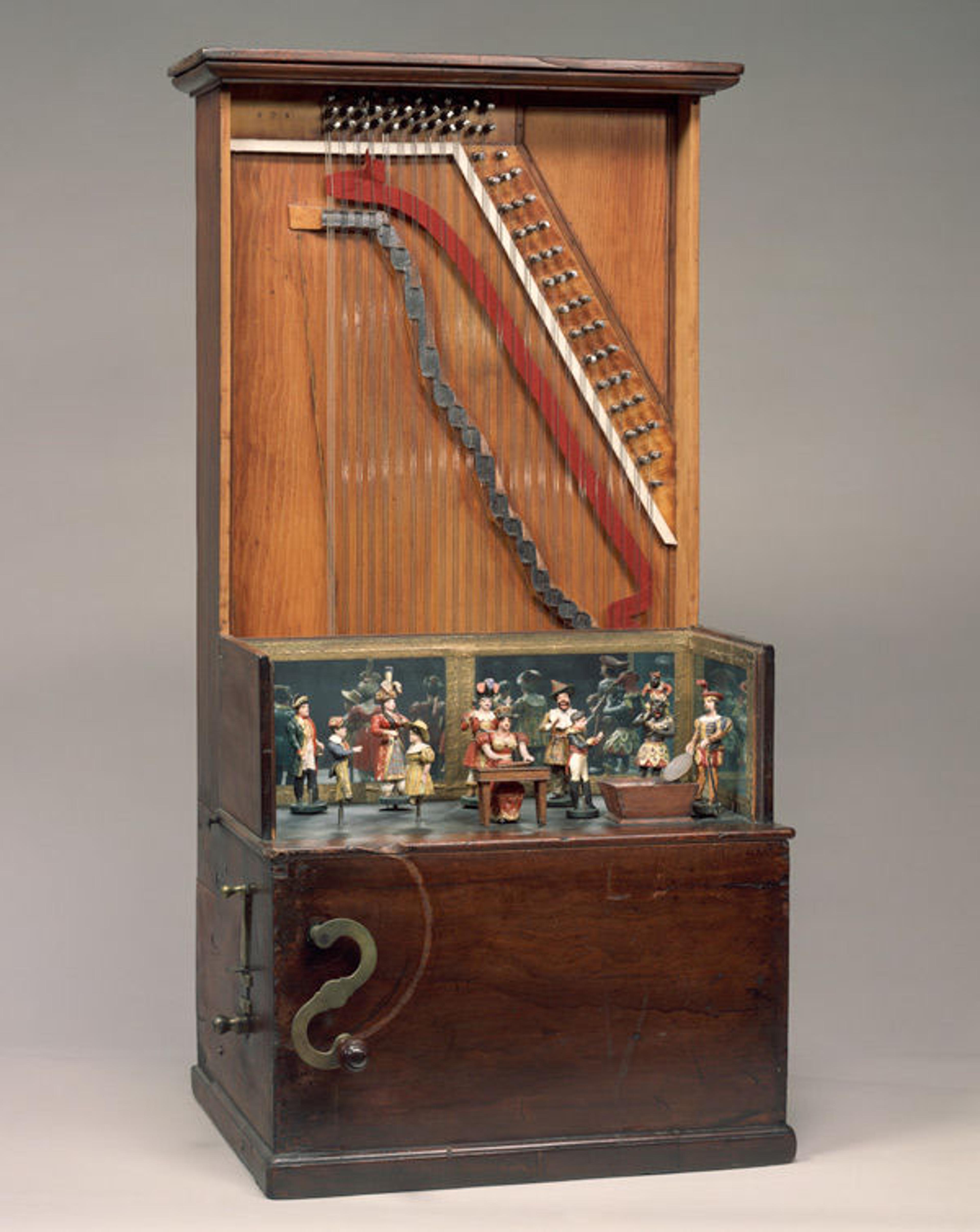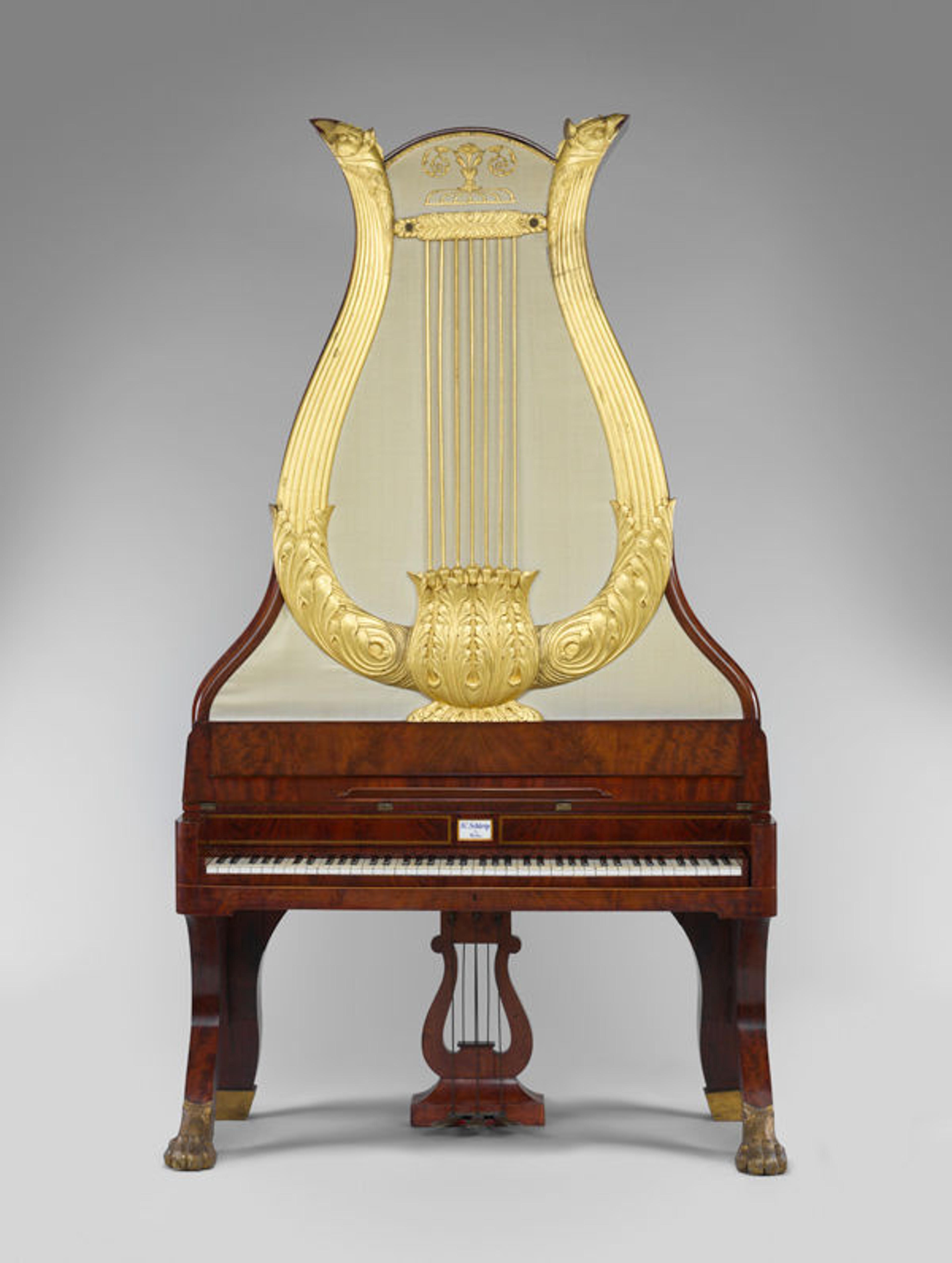«In honor of National Piano Month, the Department of Musical Instruments continues its series of posts highlighting some of the most important, unusual, and visually interesting pianos from The Metropolitan Museum of Art—home to one of the most important and comprehensive collections of historic pianos to be found anywhere in the world. After exploring the craftsmanship of Erard & Co., Joseph Böhm, F. Beale & Co., John Geib and Son, and Conrad Graf in the first installment, the survey continues with five more examples of historic pianos from the Museum's collection.»
Nunns & Clark Square Piano

Square piano, 1853. Nunns and Clark, New York, New York, United States. Various materials. The Metropolitan Museum of Art, New York, Gift of George Lowther, 1906 (06.1312)
The rosewood case is more than seven feet wide and elaborately carved. The keyboard uses mother-of-pearl covers on the natural keys and tortoiseshell veneers on the accidentals.
Fact: This square piano was likely shown at the 1853 Crystal Palace exhibition in New York City.
George Hicks Barrel Piano

George Hicks (British, 1818–1863). Barrel piano, ca. 1860. Wood, various materials. The Metropolitan Museum of Art, New York, The Crosby Brown Collection of Musical Instruments, 1889 (89.4.2048)
This type of instrument was used by street musicians who would perform for a fee, perhaps accompanying a dancing monkey. This extraordinary example has several figures that move along with the music.
Fact: This instrument has no keyboard, but a hand crank turns a wooden cylinder with brass pins that operates a piano action.
Johann Schmidt Pianoforte

Attributed to Johann Schmidt (Austrian, 1757–1804). Grand piano, ca. 1790–95. Various materials. The Metropolitan Museum of Art, New York, The Crosby Brown Collection of Musical Instruments, 1889 (89.4.3182)
This piano is thought to have been made by Johann Schmidt, a friend of Leopold Mozart (Wolfgang's father), who is known to have helped the maker attain the job of court musical-instrument maker in Salzburg. Learn more about this extremely rare example and hear recordings of the instrument being performed in the Heilbrunn Timeline of Art History.
Fact: Wolfgang Amadeus Mozart owned a piano with a similar pedalboard.
Johann Christian Schleip Lyraflügel

Johann Christian Schleip (1786–1848). Lyraflügel, ca. 1820–44. Wood, silk, gilt, ivory. The Metropolitan Museum of Art, New York, Gift of Mr. and Mrs. Theodore R. Sayers, 1968 (68.47)
In addition to the lyre shape of the case, the pedals are also mounted on a lyre. The appearance of the lyre as a decorative structure to hold the pedals became quite common on grand pianos beginning in the nineteenth century. On a modern piano, the pedals are still attached to a structure known as a "pedal lyre."
Fact: The ancient lyre was a symbol of freedom and liberation in Germany during the Napoleonic occupation, and became a decorative element of contemporary pianos and guitars.
Carl Bechstein Grand Piano

Carl Bechstein (German, 1826–1900). Grand piano, ca. 1893. Wood, metal, various materials. The Metropolitan Museum of Art, New York, Gift of Schonberger Family Foundation, 1993 (1993.292)
Carl Bechstein began building pianos in 1853—coincidentally the same year as Steinway and Sons was founded in New York. Those two firms, along with Blüthner and Bosendorfer, are referred to as the "Big Four" piano manufacturers. The Met's example was a favorite of Ruth Laredo, who recorded two albums on the instrument.
Fact: Bechstein pianos were a favorite of Queen Victoria, who installed a gilded piano for Buckingham Palace in 1881.
<p>Please enable flash to view this media. <a href="http://get.adobe.com/flashplayer/">Download the flash player.</a></p>
Johannes Brahms (German, 1833–1897). Intermezzo in E-flat Major, Op. 117, No. 1. Ruth Laredo, performing on the Carl Bechstein piano. From Such Good Friends, Sanctuary Records, 1998
Follow Jayson on Twitter: @JayKerrDobney
Related Link
Of Note: Celebrating National Piano Month, Part One